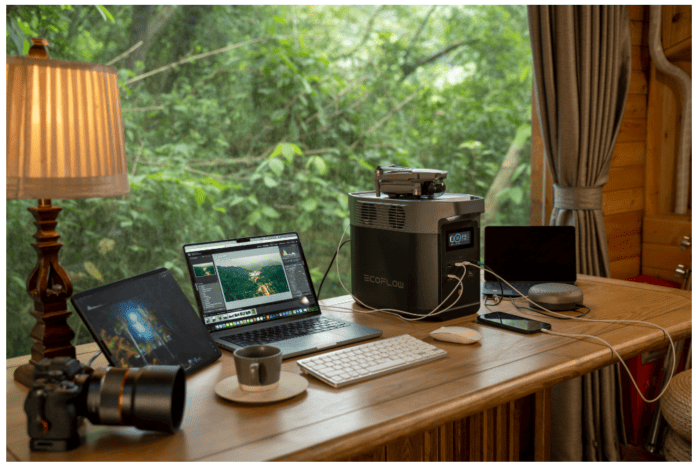Table of Contents
You might already know the differences between alternating current (AC) and direct current (DC) and how they work.
Even if you don’t, you might understand that some of the devices and appliances in your home run on AC while others may be DC devices, but it’s easy to get lost as you try to understand the difference.
Let’s make this simple:
Devices like your laptop, cellphone, camera, and more — are DC devices.
So, what’s the key characteristic that sets AC and DC devices apart?
It all comes down to batteries.
Batteries use direct current to supply power to many of the devices we use every day. These devices often use AC-to-DC adapters during the charging process.
Let’s get into a bit more detail!

Understanding Direct Current (DC)
Direct current (DC) is an electrical current that only flows in one direction with a constant amperage that never changes.
With direct current, the flow of electrons always goes from an area of high electron density (batteries) to an area of low electron density (battery-powered devices).
Think of it like this:
When you have a battery-powered device like a laptop, the laptop draws stored DC electricity from the internal battery to function. The electricity stored in the battery is then replenished using an AC-to-DC adapter that you plug into an AC power outlet (like into your wall).
When the laptop pulls the stored energy from the battery, it’s then a direct current from the battery to the laptop.

Applications of Batteries in AC Systems
Devices like solar generators and portable power stations use DC.
These devices can power appliances that use AC electricity because they contain a built-in converter, which converts the DC energy generated by the solar panels into AC electricity — which can, in turn, be used by AC appliances like refrigerators, televisions, and stereo equipment.
That’s why portable power stations like the EcoFlow DELTA Pro can have AC power outlets built in, allowing you to plug your appliance into the portable power station directly.
As a result, you can use devices that rely on alternating current power with your RIVER 2 Series or DELTA Series portable power station, even though batteries use direct current.
Frequently Asked Questions
All batteries use direct current (DC) electricity to function, including portable power stations, cell phones, laptops, and more. However, you likely charge many of these battery-operated devices using the grid, meaning they charge using AC. As your battery-powered device takes in this AC, it converts it to DC.
Like all batteries, a 12V battery uses direct current (DC). This applies to any device that runs off batteries. From your camera to your laptop or your car battery to a 12V battery. there’s no exception to this rule. This fact also means it’s more efficient to charge your battery-powered devices through your vehicle — it cuts out the energy loss that would take place during conversion.
If your device runs on a battery, it’s DC, as all batteries use direct current to function. You might assume that something uses alternating current because you can power it through an outlet or off the grid (which is always AC), but this isn’t the case. When battery-powered devices charge using the grid, the AC is converted to DC.
Batteries are only able to store currents flowing in a single direction. As a result, conventional batteries can only store direct current (DC) rather than alternating current (AC). Although we charge battery-powered devices, like laptops or cell phones, using an outlet that supplies AC power, it’s only possible because a conversion happens.
Final Thoughts
It’s easy to tell the difference between AC and DC power when you remember one simple rule — all batteries use direct current. Anything that uses a battery to store and supply energy will use direct current.
While it’s helpful to know the difference between DC and AC, the good news is that EcoFlow’s portable power stations make conversion between the two so simple that you barely have to think about it! Check out EcoFlow’s selection today to find your ideal power solution.


